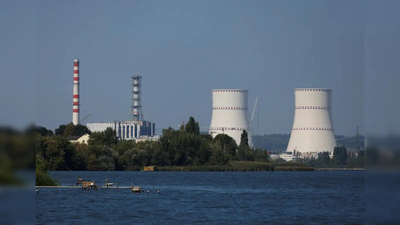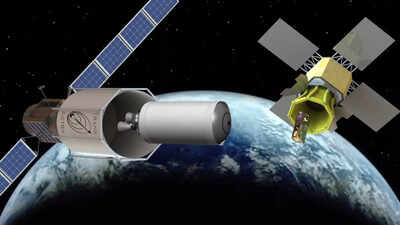Morocco’s meteorite rush: Fireball sparks massive search; Sahara becomes global hotspot

Riches from outer space are pulling meteorite hunters into Morocco’s Sahara Desert, where a fast-growing trade in space rocks is changing remote communities and sparking intense races each time a fireball appears.When a fireball crashed into the rocky plains of southeast Morocco in September, 52-year-old merchant Mohamed Benitjit topped up the credit on his phone, packed a tiny magnet and a few clothes, and prepared to search for fragments. “I just need to know where it landed,” Benitjit said in Enzala, a village at the foothills of the Atlas mountains. “Information is everything in our trade. It doesn’t come easy since whoever finds something likes to keep it for himself,” he added, as quoted by Bloomberg.Morocco has become one of the world’s most active hubs for meteorite hunting. The country has reported more falls than anywhere else in the past 20 years, and about half of all scientific publications involving meteorites are based on finds made there, according to Hasnaa Chennaoui Aoudjehane, a professor of meteoritics and planetary science at Hassan II University of Casablanca.Meteorites sell for prices ranging from a few hundred dollars online to millions at major auction houses. Morocco has made it easier to export finds as part of efforts to boost tourism and create new income sources for remote regions hit by climate change. What was once “a hobby and a key part of the local heritage” has become “an extractive activity in its own right,” said independent socio-economist Samira Mizbar.Meteorites break into pieces as they enter the Earth’s atmosphere, and only a small fraction are ever recovered. Most of those found in Morocco fell years or even centuries ago and come from asteroids, the moon, or Mars. They contain cobalt, iron, and nickel, making them magnetic. They also include carbonaceous chondrites, which are rich in water, sulfur, and carbon-based compounds, as well as new types “that have expanded our knowledge of the materials in the asteroid belt,” said Guy Consolmagno, director of the Vatican Observatory and head of The Meteoritical Society, as reported by Bloomberg.Morocco’s desert climate preserves fragments well, and the open landscape makes them easier to spot. Meteorite hunting has existed for decades, with the first recorded find in 1932. Activity surged in 2011 after a fireball fell in the Oued Drâa valley. Nomads recovered pieces that were sold to dealers. The Natural History Museum in London bought a 1.1kg fragment for 330,000 pounds, while the Attarik Foundation holds a 7-gram fragment worth $7,000. The high prices of the so-called Tissint Martian pieces reflected their freshness, rarity, and origin, since less than 0.3% of fragments in collections come from Mars.The market grew even faster in 2020, when Morocco allowed licensed meteorite hunters to export or sell up to 90% of their finds after registering them with the Geology Directorate, which keeps the rest for its scientific record. Licenses are free and available to residents, and some hunters now organise tourist trips. Still, “the legal or official circuit only captures a tiny portion of the trade,” said Chennaoui. She believes the rules balance the needs of scientists and traders and hopes a certification system will be introduced to “maximise profit.”Morocco now has the region’s least restrictive laws. Algeria, Libya, Egypt, and Tunisia all ban meteorite exports, and Mauritania has no dedicated legislation. Niger opened an investigation after a large Martian fragment sold for $5.3 million at Sotheby’s.The value of meteorites has risen sharply, said Philipp Heck of the Field Museum. A gram of lunar meteorite now sells for more than $100, while a gram from Mars can exceed $1,000. Buyers in Morocco include hundreds of fossil and meteorite shops, as well as collectors such as Faouzi Chaabi, owner of Ynna Holding. “Until a few decades ago, shiploads of meteorites and fossils left Morocco for North America and Spain unchecked and unregulated,” Chaabi said. “That pained me.”The September fireball triggered another large search. Around 100 people, some in four-wheel vehicles, were seen combing the desert within a 30-mile radius of Jbel Ayachi, said Rachid Adnane, who chairs the elected council in Midelt. “This is an exceptional activity,” he said. “It’s bringing in tourists and foreign currency, everyone is benefiting.”Locals — including shepherds, traders, and middlemen — also joined the hunt. Meteorites offer a rare economic lifeline. “We are quite destitute,” said Said Jagouj, who runs a fossil and meteorite shop in Midelt. “There’s little else to do apart from apple farming and meteorites.”Stories circulate about hunters who became wealthy, but Benitjit has yet to make a big find. His most valuable discovery, in 2018, earned him about 1,500 dirhams ($162). Standing at a weekly market in Enzala beside a tiny table covered in meteorite fragments, he said he still doesn’t know where to search for the fireball that fell in September. Pulling a carefully wrapped 250-gram rock from his pouch, he said, “This is beautiful. It came from the moon.”






